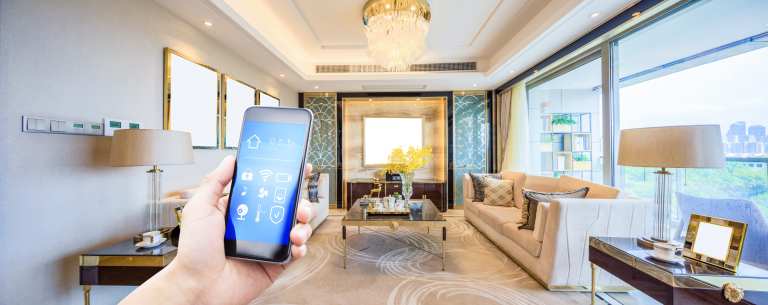We are not exactly Nostradamus here at PYMNTS, but we do have a good view into the future as it will play out in the new decade. And you can bet that the rise of the so-called smart home — powered in large part by voice-assisted retail and payments — will be one the main trendlines of the 2020s.
Both PYMNTS research and some big recent news involving three Big Tech operators supports that view.
First, let’s revisit the news, just in case you might have missed it. Amazon, Google, Apple and the Zigbee Alliance unveiled a new working group to promote the adoption of a new royalty-free connectivity standard to make smart home products more compatible with security as a design tenet. Zigbee Alliance board member companies like IKEA, Samsung SmartThings and Silicon Labs, among others, are also on board to join the working group to make contributions to the effort, according to the Dec. 18 announcement.
The idea is to promote compatibility for consumers and make smart home development in general simpler for manufacturers. The group’s activities are supposed to be centered around the idea that smart home devices should be seamless, reliable and secure. Interoperability, compatibility and open sources are among the lodestones for this effort. According to the announcement about the creation of this effort, “by building upon Internet Protocol (IP), the project aims to enable communication across smart home devices, mobile apps, and cloud services and to define a specific set of IP-based networking technologies for device certification.”
Voice Trends
As you can imagine, the project focus will almost certainly be wrapped around smart-home use cases involving such voice-assisted products as Amazon’s Alexa, Google’s Assistant, and Apple’s Siri. Indeed, voice, after a spectacular rise in popularity over the last year or two — Alexa was one of the holiday shopping success stories of 2019, after all — is poised for a dominating role in the 2020s, just as PYMNTS research has documented and anticipated.
Advertisement: Scroll to Continue
In fact — sorry for being immodest here, but PYMNTS has dug deep into this issue, so please forgive us — there exist numerous data points that illustrate the lucrative nature of smart home opportunities (enough data to make this article too long for pleasurable reading). Some of the freshest and most telling evidence comes from fresh PYMNTS research — specifically, How We Will Pay 2019, a collaboration between PYMNTS and Visa examining how consumers use a wide range of connected devices to shop and make purchases.
Consider this as you ponder the future of smart-homes and that new Big Tech collaboration described above: Nearly a third, or 31 percent, of all consumers reported that they owned at least one voice-activated device in 2019, up from 14 percent in 2017, according to that PYMNTS-Visa research report.
Chores and Commerce
And that’s hardly the only picture of the voice and smart home trend.
Not only has the share of consumers who own connected devices more than doubled since 2017, but they are also more likely to use those connected devices to make eCommerce purchases. In fact, roughly one in every 10 consumers today uses voice-enabled devices and apps to browse, shop and buy goods online. It’s a remarkable acceleration of a technology that is still relatively young, and for which the use cases for commerce are both nascent and very much evolving. It would hardly seem wise to bet against the further rise of such technology in the 2020s.
Another big data point shows how smart homes are set to become a bigger part of the payments and commerce landscape, and why those big companies are trying to find a way to play nice together, at least on this issue, and at least for now. PYMNTS research has found that 76 percent of consumers make purchases while going about their daily routines. That matters because there are few things more routine than all the chores and tasks we all do while inside our homes — tasks that can turn into payments an commerce opportunities thanks to such technology as voice-assisted devices.
Amazon Intent
Numerous examples serve to drive home that point, but Amazon provides some strong recent clarity that is noteworthy. In a recent blog post, Prashanth Halappa, senior product manager at Amazon, touted a new Alexa feature that will, simply put, “ensure that customers always have the supplies required for their device to run at its best, and earn revenue while doing so. Any connected device that uses a consumable — such as printers (ink), thermostats (air filters), toothbrushes (toothbrush heads), washing machines (detergent), dishwashers (detergent), or has replacement parts — such as vacuum cleaners (dust bags, brushes) — can take advantage.”
The idea, he continued, is to “use inventory sensors in your smart home skill to provide consumption updates and Alexa does the rest. Alexa will let customers know when supplies used by your device are running low or parts need replacement.”
The 2020s promise to marry various innovations and trends that have played out over the previous 10 years — the new decade could shape up to be a big one for payments and commerce. And it is almost certain that smart homes and voice-assisted technology will be among the biggest stories of the next 10 years.




